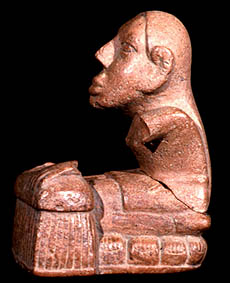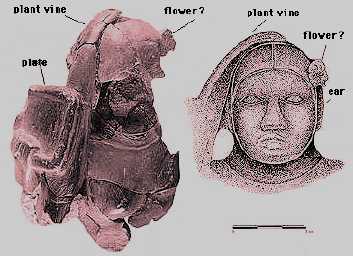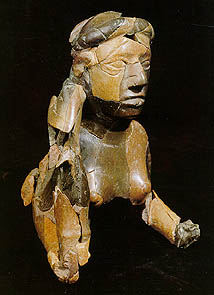
Keller figurine, BBB Motor site.
Where torsos are present, all are depicted with skirts. A headband or more likely a tumpline is depicted on the head of the Sponeman figurine. Both the Sponemann and and Birger pieces appear to have some sort of backback. The Willougby woman is clutching rectangular trays, possibly paint palletes or something like the trays used by historic Native Americans as part of their green corn ceremony .
The same is true of the chert hoe held by the woman in the Birger figurine. Missisippian maize processing is apparently illustrated by what appear to be a metate and mano in front of the woman sitting on ears of maize in the Keller figurine.

